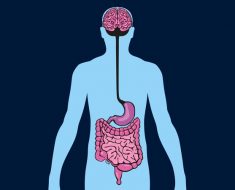In a recent study published in the Scientific Reports journal, researchers explored the effects of attention dysregulation on anxiety, cognition, and low mood among adolescents.
 Study: Impact and centrality of attention dysregulation on cognition, anxiety, and low mood in adolescents. Image Credit: SeventyFour/Shutterstock.com
Study: Impact and centrality of attention dysregulation on cognition, anxiety, and low mood in adolescents. Image Credit: SeventyFour/Shutterstock.com
Background
Studies suggest that cognitive impairment is a common characteristic of various psychopathology (C-factor) and that there is a significant overlap between different forms of psychopathology in the general population (P-factor).
The exact cause-and-effect connections between a possible C-factor and a P-factor remain uncertain. Fitting models that explore transdiagnostic characteristics of psychopathology and cognitive impairments may offer insight, but they do not explain specific psychological processes or symptoms.
Therefore, the present study aimed to determine if attention dysregulation is crucial in transdiagnostic cognitive deficits and various psychopathological characteristics.
About the study
The Adolescent Brain Cognitive Development (ABCD) cohort was analyzed, including large sample size, a diverse range of psychopathology measures, and an extensive cognitive task battery. The Parent-Child Behavioral Checklist (CBL) was used to extract dimensional mental health ratings.
This checklist includes specific DSM-oriented symptoms and sum scores for attention deficit hyperactivity disorder (ADHD), depression, anxiety, and other dimensions. The measures were rated by parents based on their frequency and accuracy in testing their children.
The National Institutes of Health (NIH) Toolbox in the ABCD Neurocognition Battery was used to obtain composite age-corrected fluid and crystallized intelligence measures to decrease cognitive data's dimensionality.
Scores from various cognitive tests, including the Dimensional Change Card Sort (DCCS), Picture Sequence Memory, List Sorting Working Memory, Flanker Inhibitory Control and Attention, and Pattern Comparison Processing Speed tests, were used to calculate fluid ability scores.
The final result included executive functioning (EF) functions such as inhibitory control, shifting, and working memory. The Oral Reading Recognition Test and the Picture Vocabulary Test were the sources of crystallized abilities.
The analysis focused on psychiatric dimensions, specifically the top 15% and bottom 15% percentiles of different dimensions. The study aimed to test the hypothesis that dysregulated attention is the main factor contributing to cognitive deficits.
The team examined five groups of individuals with depression and ADHD: those with high levels of both conditions, those with increased depression and low ADHD, those with low depression and high ADHD, those with low levels of both conditions, and a control group.
Furthermore, for ADHD and anxiety, the team categorized the participants into those with high ADHD and high anxiety, low ADHD and high anxiety, high ADHD and low anxiety, low ADHD and low anxiety, and others which included controls.
The study conducted a one-way covariance (ANCOVAs) analysis to assess the impact of various psychopathological stratifications on cognitive performance tasks. The research was performed separately for anxiety and depression stratifications and focused on measuring fluid, crystallized, and total cognitive performance.
Results
The study found significant correlations between cognitive performance and factors such as ADHD dimensions, internalizing and externalizing, perfectionism, and depressive and anxious dimensions, with correlation coefficients ranging from 0.01 to 0.15.
The study found that there were significant differences in cognitive performance between depression and ADHD groups when the stage of puberty and parental income were taken into account as covariates.
Both high ADHD and high depression, as well as high ADHD and low depression groups, showed significant impairment in all three estimates of cognitive performance. The ABCD neurocognition battery shows consistent patterns for individual EF task scores within the fluid task performance measure.
An odd-even split-half assessment of the full sample confirmed the internal consistency of the results. The study found significant differences in cognitive performance types between ADHD/Anxiety stratifications using a one-way ANCOVA with the same covariates.
Individuals categorized under high anxiety/high ADHD and low anxiety/high ADHD stratifications exhibited significant cognitive impairment across all three performance estimates, similar to the ADHD/depression stratifications. The internal consistency of the results was confirmed through an odd-even split-half assessment of the full sample.
The team also found that parental income, anxious and depressive symptoms, and concentration difficulties significantly affected cognitive performance.
Three two-way analyses of variance (ANOVA) were conducted, revealing that parental income and concentration difficulties greatly influenced all three types of cognitive performance. At the same time, depression and anxiety only affected crystallized and total cognitive performance.
No significant interaction effects were found between parental income, depression, anxiety, concentration difficulties, and cognitive performance measures.
The smaller network showed that ADHD-associated dimensions, anxiety, and low mood symptoms had the highest expected influence scores. Additionally, the study found that obsessive thinking styles may associate with ADHD and anxiety symptoms. At the same time, negative peer relationships may link ADHD/oppositional defiant disorder (ODD) and social detachment/distress, leading to low mood.
Conclusion
The study indicates that cognitive impairments among adolescents are primarily caused by attentional dysregulation, particularly in those with anxiety or low mood, rather than general psychopathology. The dataset showed a slight correlation between general psychopathology and executive functions.
However, executive functions were identified as predictors of change within general psychopathology "P-factor." This suggests that it may take time for executive function impairments to develop into psychopathology.
The findings also demonstrate that early interventions that target attention dysregulation could facilitate the prevention of negative social and cognitive outcomes related to ADHD as well as the pathological dynamics that manifest in the amplification of internalized distress.
-
Roberts, C. et al. (2023) "Impact and centrality of attention dysregulation on cognition, anxiety, and low mood in adolescents", Scientific Reports, 13(1). doi: 10.1038/s41598-023-34399-y. https://www.nature.com/articles/s41598-023-34399-y
Posted in: Child Health News | Medical Science News | Medical Research News | Medical Condition News | Healthcare News
Tags: Adolescents, Anxiety, Brain, Children, Depression, Frequency, Hyperactivity, Mental Health, Oppositional Defiant Disorder, Puberty, Research

Written by
Bhavana Kunkalikar
Bhavana Kunkalikar is a medical writer based in Goa, India. Her academic background is in Pharmaceutical sciences and she holds a Bachelor's degree in Pharmacy. Her educational background allowed her to foster an interest in anatomical and physiological sciences. Her college project work based on ‘The manifestations and causes of sickle cell anemia’ formed the stepping stone to a life-long fascination with human pathophysiology.
Source: Read Full Article





